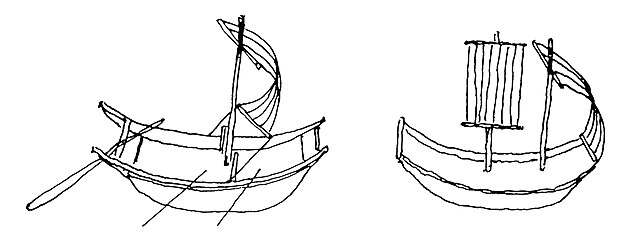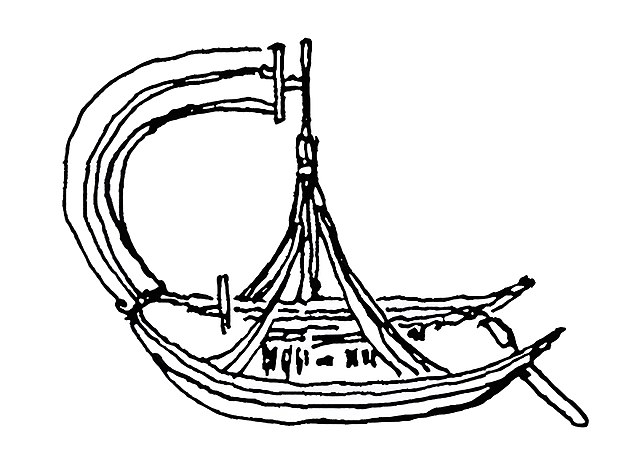Keying was a three-masted, 800-ton Fuzhou Chinese trading junk which sailed from China around the Cape of Good Hope to the United States and Britain between 1846 and 1848. Her voyage was significant as it was one of the earliest instances of a Chinese sailing vessel making a transoceanic journey to the Western world. It served as a cultural exchange and offered Western audiences a glimpse into Chinese maritime traditions and craftsmanship.
"Keying" in New York harbour, July 13th, 1847.
Keying in 1848. This depiction exaggerates the curvature of the hull.
"The Bay and Harbor of New York" by Samuel Waugh (1814–1885), depicting the Junk Keying moored in New York Harbor in 1847 (watercolor on canvas, c. 1853–1855, Museum of the City of New York).
The medal made for the arrival of the Junk Keying in Britain.
A junk is a type of Chinese sailing ship with fully battened sails. Similar junk sails were also adopted by other East Asian countries, most notably Japan, where junks were used as merchant ships to trade goods with China and Southeast Asia. They were found – and in lesser numbers, are still found – throughout Southeast Asia and India, but primarily in China. Historically, a Chinese junk could be one of many types of small coastal or river ships, usually serving as a cargo ship, pleasure boat, or houseboat, but also ranging in size up to large ocean-going vessel. Found more broadly today is a growing number of modern recreational junk-rigged sailboats. There can be significant regional variations in the type of rig or the layout of the vessel; however, they all employ fully battened sails.
Junks in Guangzhou, photograph c. 1880 by Lai Afong
A kai-sen of Ryukyu, 19th century
Tracing of two ships from Dunhuang cave temple, c. 8th–9th century CE. The ships showed square sails.
Tracing of a ship on a mirror in the Shaanxi museum (>9th or >12th century CE).








